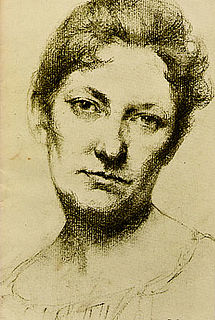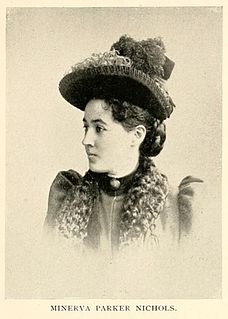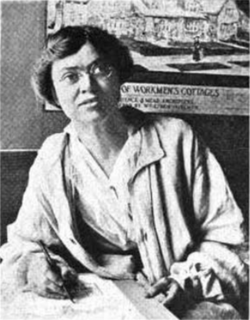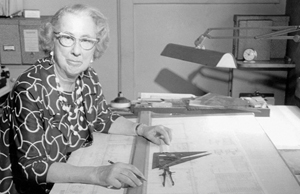
Minerva Josephine Chapman (1858–1947) was an American painter. She was known for her work in miniature portraiture, landscape, and still life.

Sophia Hayden was an American architect and first female graduate of the four-year program in architecture at Massachusetts Institute of Technology.

Ida Annah Ryan (1873–1950) was a pioneering United States architect known for her work in Massachusetts and Florida. She was the first woman to receive a Master of Science from the Massachusetts Institute of Technology and the first woman to receive a Master's degree in architecture anywhere in the United States. She was the eighth woman to be admitted to the American Institute of Architects.
Isabel Roberts was a Prairie School figure, member of the architectural design team in the Oak Park Studio of Frank Lloyd Wright and partner with Ida Annah Ryan in the Orlando, Florida architecture firm, "Ryan and Roberts".
James J. Egan, FAIA, was an Irish-American architect and fellow of the American Institute of Architects practicing in Chicago, Illinois. He was a partner of the Chicago architectural firms Armstrong & Egan, Egan & Kirkland and Egan & Prindeville, which gained prominence designing Roman Catholic structures.
Josephine Wright Chapman (1867–1943) was an American architect in Boston, Massachusetts, and New York. Chapman received no formal education or encouragement from her family to pursue architecture. She is considered one of the most important female architects around the start of the 20th century.

Minerva Parker Nichols was an architect from the United States.

Ethel Bailey Furman née Ethel Madison Bailey was an American architect who was the earliest known African-American female architect in Virginia.

Women in architecture have been documented for many centuries, as professional practitioners, educators and clients. Since architecture became organized as a profession in 1857, the number of women in architecture has been low. At the end of the 19th century, starting in Finland, certain schools of architecture in Europe began to admit women to their programmes of study. In 1980 M. Rosaria Piomelli, born in Italy, became the first woman to hold a deanship of any school of architecture in the United States, as Dean of the City College of New York School of Architecture. However, only in recent years have women begun to achieve wider recognition with several outstanding participants including two Pritzker prizewinners since the turn of the millennium.
Lois Lilley Howe was an American architect and founder of the first all female architecture firm in Boston, Massachusetts.

Marcia Mead (1879–1967) was an early 20th century American architect known for taking a neighborhood-centered approach to the design of low-cost housing. With Anna P. Schenck (1874–1915), she was a partner in the firm of Schenck & Mead, which was acclaimed in 1914 as the first team of women architects in America but was actually formed later than both Gannon and Hands and the partnership of Florence Luscomb and Ida Annah Ryan. Schenck died early in their partnership, after which Mead pursued a solo career.

Edith Northman (1893–1956) was one of Southern California's first woman architects, and the first woman registered architect in Los Angeles. She worked on a wide range of buildings in the region, ranging from residential to commercial.

Georgia Louise Harris Brown is considered to be the second African American woman to become a licensed architect in the United States. She was also the first black woman to earn a degree in architecture from the University of Kansas. She was also the only black member of the Chicago chapter of Alpha Alpha Gamma.

Beverly Loraine Greene was an American architect. According to architectural editor Dreck Spurlock Wilson, she was "believed to have been the first African-American female licensed as an architect in the United States." She was registered as an architect in Illinois in 1942.
The National Council of Architectural Registration Boards estimates that, at the end of 2013 there were 105,847 licensed architects in the United States. Of these, 2,006, or about 2%, are self-identified as African American, and listed in the Directory of African American Architects; only 343 of these are African American women. "If there is any kind of profession that's gotten away with a kind of benign neglect of diversifying itself over the course of last 30 years, it's architecture," says Ted Landsmark.
Margaret Read (1892–1982) was the first female architect in Boulder, Colorado. Born in Iowa, she relocated with her parents to Boulder in 1910. After attending the University of Boulder for two years, she transferred to the University of California at Berkeley in the architecture program, where she was one of five women in the class. Upon returning to Boulder, she was hired by the offices of Glen H. Huntington in 1926. Huntington's was Boulder's sole architectural firm at that time In 1929, Read designed the noted Gothic Revival Trinity Lutheran Church at 2200 Broadway in Boulder, which received landmark status in January 2016 As a result of the post-World War I housing boom, Huntington's office was busily involved in building homes in the University Hill area of Boulder and it was there that Read designed her own Mediterranean Revival home at 740 13th Street, where she lived with her father. In the 1930s, Read served on Boulder's city planning and parks commission.
















